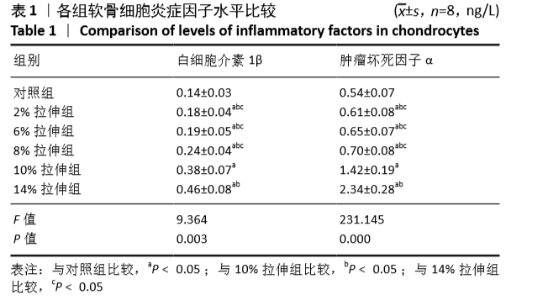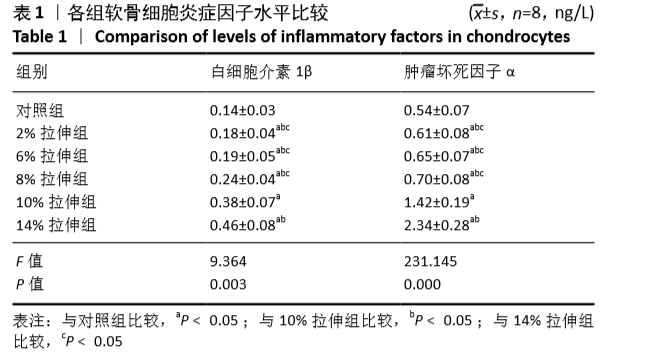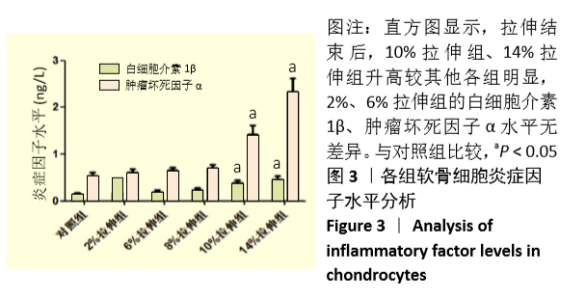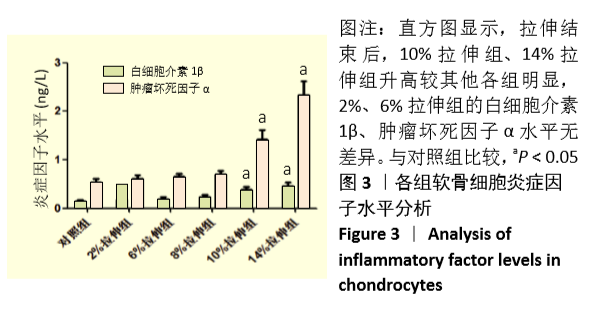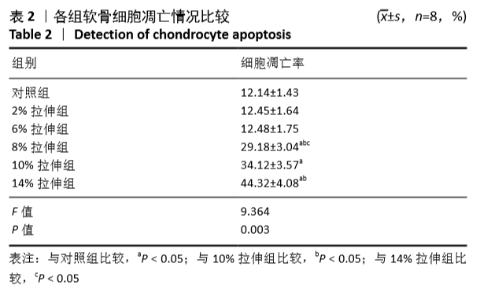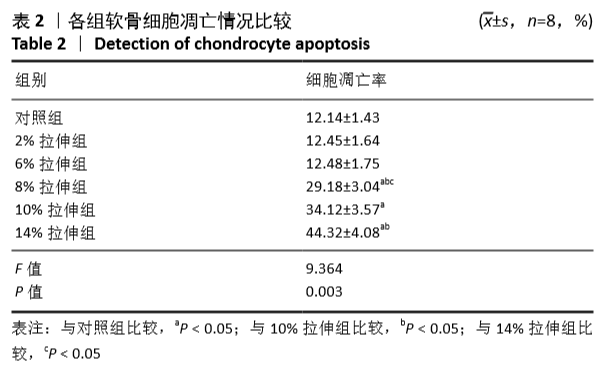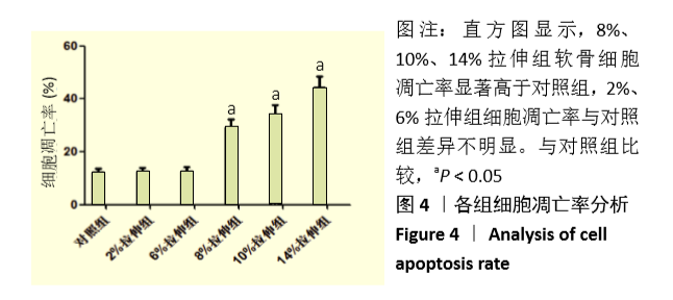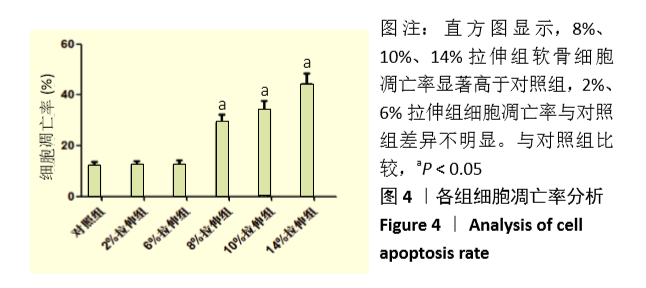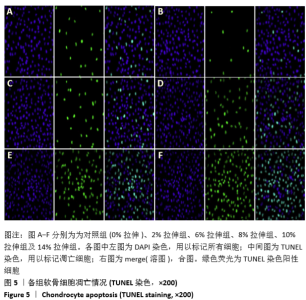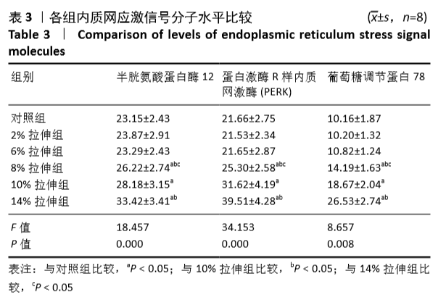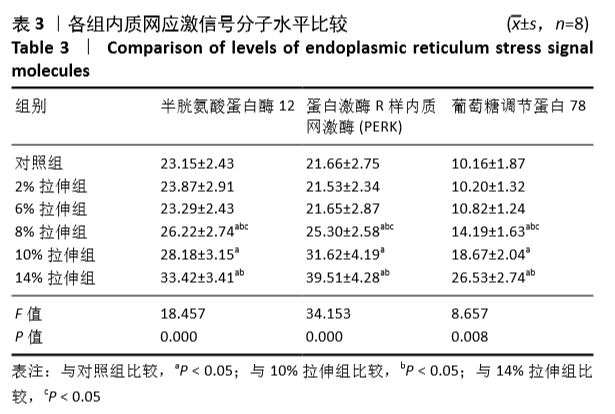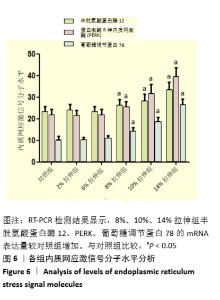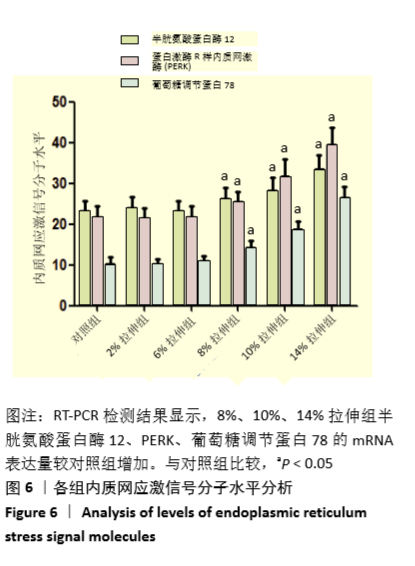[1] GEYER M, SCHÖNFELD C. Novel Insights into the Pathogenesis of Osteoarthritis. Curr Rheumatol Rev. 2018;14(2):98-107.
[2] 李灿锋,陈卓,曾羿,等.骨形态发生蛋白信号通路在骨关节炎发病机制中的作用研究[J].中华关节外科杂志(电子版),2017,11(5): 500-505.
[3] 谢文斌,龚啸元,杨柳,等.骨关节炎膝关节原位软骨细胞自发性钙离子信号的变化[J].中华关节外科杂志(电子版),2016,10(3):319-325.
[4] 许舜,李曾,翟晨骏,等.周期性机械应力条件下大鼠软骨细胞的蛋白质组学分析[J].江苏医药,2016,42(8):869-871,前插1.
[5] 胡海,刘旭卓,贾维中,等.周期性机械应力对大鼠软骨细胞增殖的影响[J].川北医学院学报,2020,35(1):35-37,56.
[6] 葛雨庆,梁文卫,刘久翔,等.周期性应力下胰岛素样生长因子1受体对大鼠软骨细胞功能的影响[J].中华关节外科杂志(电子版), 2018,12(2):209-216.
[7] 姚旺祥,戴晗豪,桂鉴超.机械应力促进炎性环境中软骨修复的机制研究[J].浙江大学学报(医学版),2019,48(5):517-525.
[8] 汪立梅,张家明,吕正涛,等.机械应力调控软骨细胞炎症反应中长链非编码RNA的机制研究[J].中华物理医学与康复杂志,2017, 39(2):86-91.
[9] VISSER AW, DE MUTSERT R, LE CESSIE S, et al. The relative contribution of mechanical stress and systemic processes in different types of osteoarthritis: the NEO study. Ann Rheum Dis. 2015;74(10):1842-1847.
[10] 何薇,赵峰,张国平,等.透明质酸对骨关节炎软骨细胞白细胞介素-1β及肿瘤坏死因子-α表达的影响[J].中国老年学杂志,2017, 37(1):25-27.
[11] 张晓梅,彭旭,魏诗航,等.力学刺激调控骨髓间充质细胞向软骨的分化[J].中国组织工程研究,2016,20(45):6834-6840.
[12] 张津铭.周期性机械应力对软骨细胞表型与自噬的影响及其相关机制[D].武汉:华中科技大学,2016.
[13] 史达,赵聪喆,柴惠斌,等.IL-1β诱导内质网应激增加人软骨细胞凋亡[J].基础医学与临床,2015,35(8):1089-1093.
[14] 莫骏,陈颖,仲冬艳,等.适量循环压应力影响细胞骨架促进关节软骨细胞的合成代谢[J].中国组织工程研究,2016,20(37):5511-5517.
[15] 王雪冰,宋玉娟,邓雪峰,等.软骨细胞在机械力刺激下细胞骨架及细胞形态改变的体外研究[J].中国医药科学,2017,7(1):36-40,116.
[16] 陈著科,李晓飞,张海宁,等.周期性张应力作用下软骨细胞半胱氨酸蛋白酶12的表达规律[J].中国组织工程研究,2016,20(29): 4334-4340.
[17] YAN S, JIANG C, LI H, et al. FAM3Aprotects chondrocytes against interleukin-1β-induced apoptosisthrough regulating PI3K/Akt/mTOR pathway. Biochem Biophys Res Commun. 2019;516(1):209-214.
[18] ZHU H, HU Y, WANG C, et al. CircGCN1L1 promotes synoviocyte proliferation and chondrocyte apoptosis by targeting miR-330-3p and TNF-α in TMJ osteoarthritis.Cell Death Dis. 2020;11(4):284.
[19] ZHOU RP, DAI BB, XIE YY, et al. Interleukin-1β and tumor necrosis factor-α augment acidosis-induced rat articular chondrocyte apoptosis via nuclear factor-kappaB-dependent upregulation of ASIC1a channel. Biochim Biophys Acta Mol Basis Dis. 2018;1864(1):162-177.
[20] 刘文华,刘亚,邱玉金,等.压应力下兔软骨细胞的凋亡和IL-1β、TNF-α的相关性研究[J].中国康复医学杂志,2006,21(9):800-803.
[21] 何勇槟,刘圣曜,邓淞云,等.周期性拉伸应力对大鼠软骨细胞代谢及凋亡的影响[J].中华物理医学与康复杂志,2016,38(11):813-818.
[22] 李陆,许佳强,赵中亭,等.机械应力刺激对关节软骨代谢的调控影响[J].西安体育学院学报,2019,36(5):619-625.
[23] 王天宝,李晓飞,冷萍,等.新型机械敏感性离子通道在软骨细胞凋亡中的作用机制[J].中华实验外科杂志,2017,34(11):1820-1823.
[24] LI XF, ZHANG Z, CHEN ZK, et al. Piezo1 protein induces the apoptosis of human osteoarthritis-derived chondrocytes by activating caspase-12, the signaling marker of ER stress.Int J Mol Med. 2017;40(3):845-853.
[25] HISANAGA S, MIYAKE M, TANIUCHI S, et al. PERK-mediated translational control is required for collagen secretion in chondrocytes. Sci Rep. 2018;8(1):773-773.
[26] WU Z, LI M, ZHENG W, et al. Silencing of both ATF4 and PERK inhibits cell cycle progression and promotes the apoptosis of differentiating chondrocytes. Int J Mol Med. 2017;40(1):101-111.
[27] XIONG Z, JIANG R, LI X, et al. Different roles of GRP78 on cell proliferation and apoptosis in cartilage development. Int J Mol Sci. 2015;16(9):21153-21176.
|




